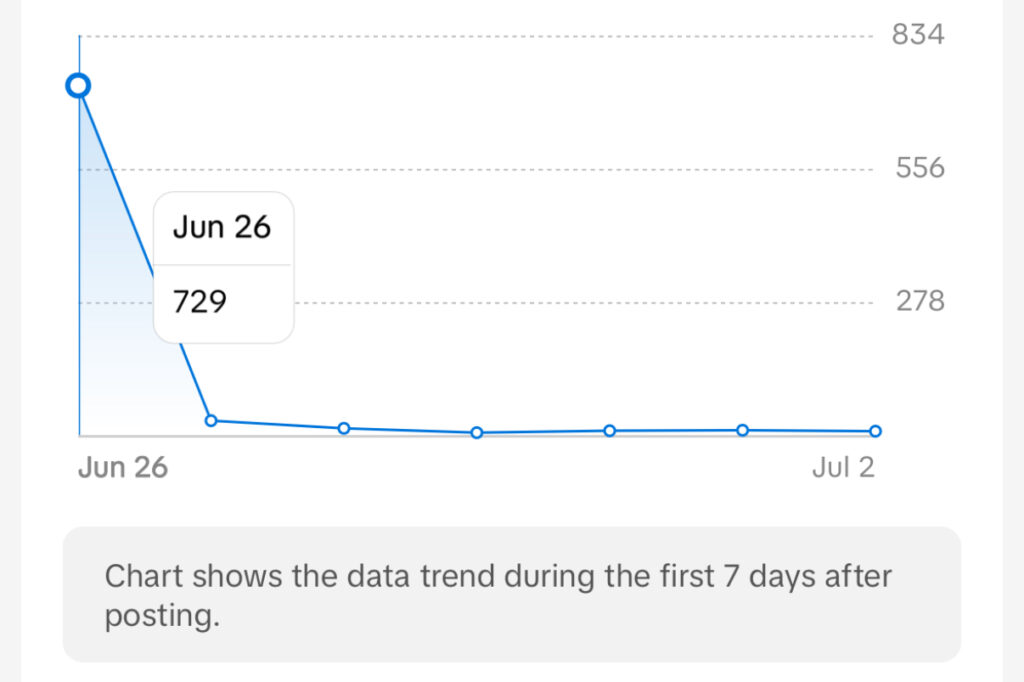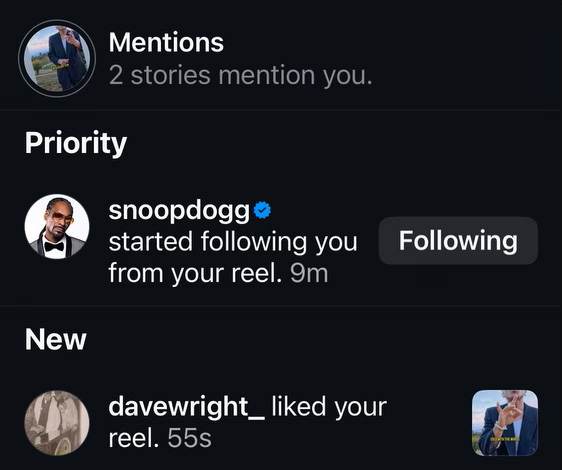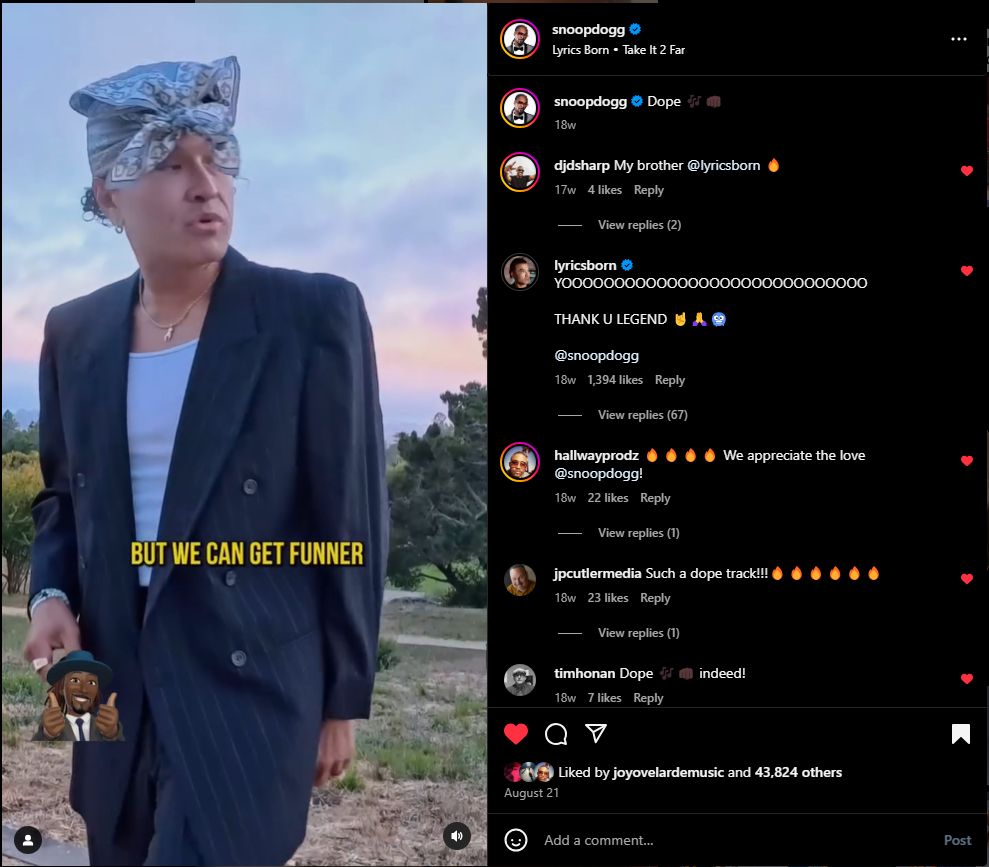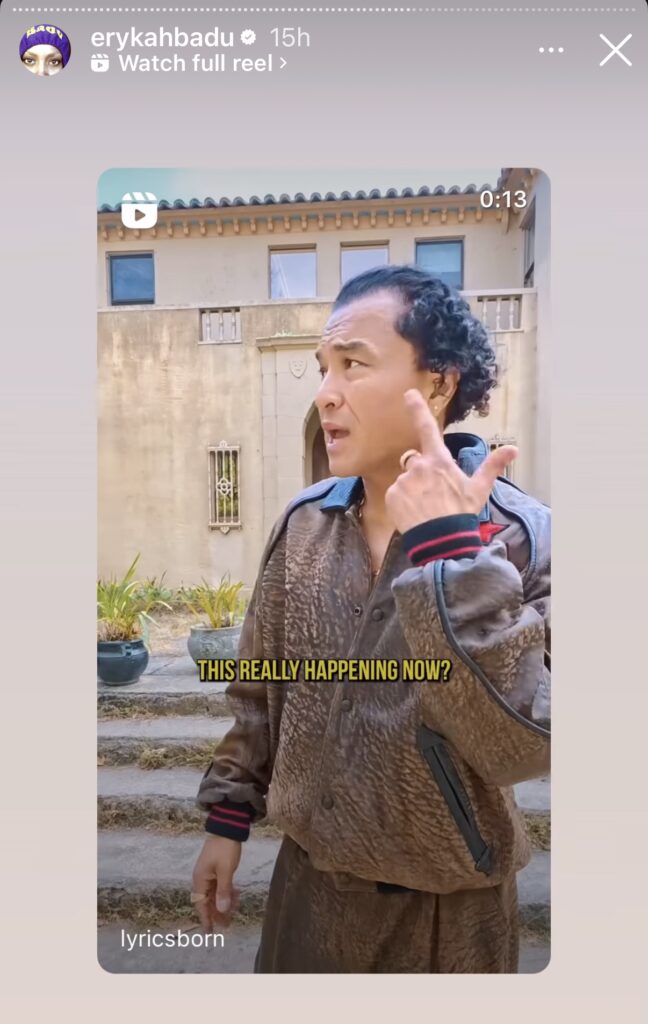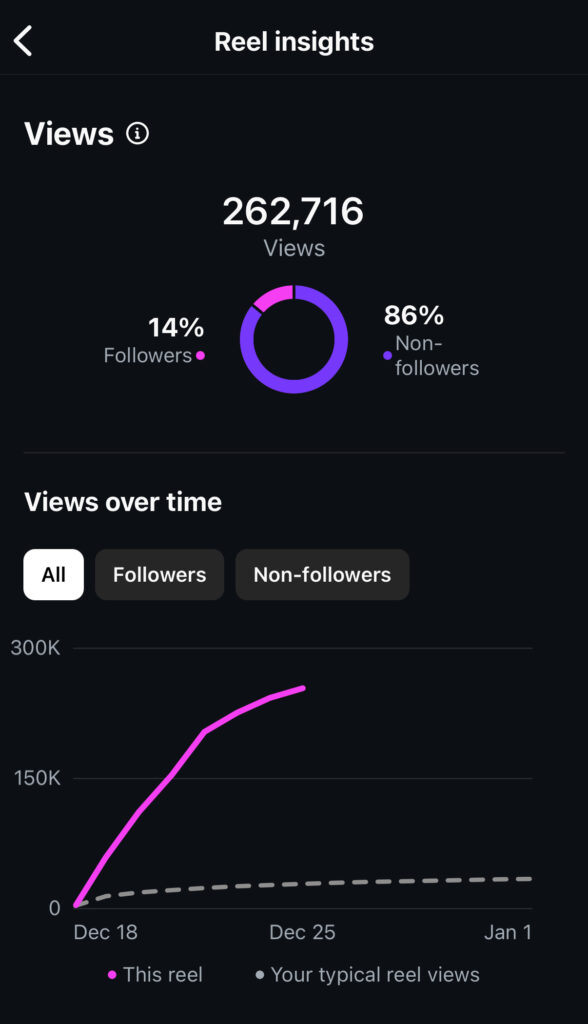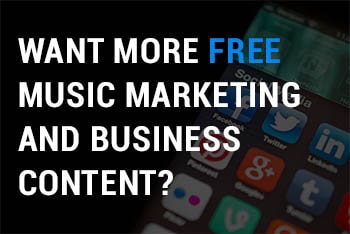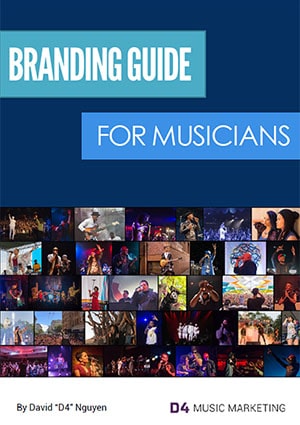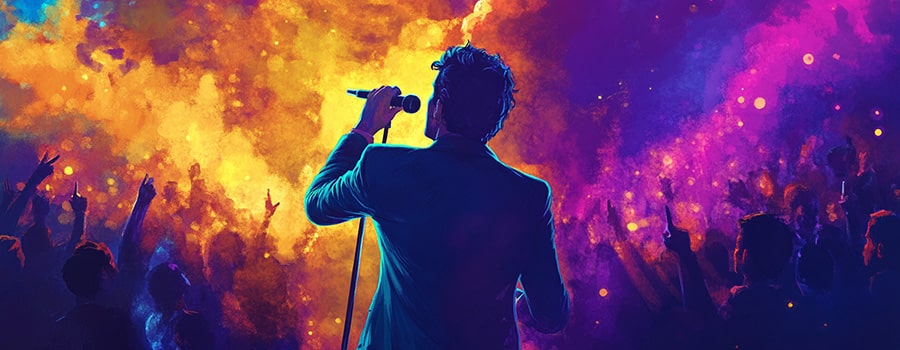
Many independent artists struggle with social media marketing. It’s not easy to know what exactly to post to break through the noise, get your music heard and reach new potential fans.
I put together a case study based on a recent album campaign I did to show you that it’s not as complicated as it seems to gain traction on social media.
This album rollout campaign resulted in 3 videos I created to promote singles for an artist going viral. This led to Snoop Dogg reposting one of these videos to his 80 million Instagram followers and Erykah Badu sharing another video to her Instagram Stories.
The organic reach for these viral videos spread well outside our network where random, high-profile artists, comedians and celebrities even engaged with the videos. This was my first time experiencing something like this so it was quite interesting to see it unfold.
During the 3 month campaign that started with the first single release on 8/8/24:
- We accumulated over 10 million views for the videos promoting the singles across all platforms (Instagram, TikTok, Facebook, YouTube Shorts). The videos were shared over 120k times.
- Spotify monthly listeners increased by over 35,000 (25% increase)
- Instagram followers increased by over 4x
- TikTok followers increased by over 17x
- One song from the new album, What Dreams Are Made Of, was added to a Spotify editorial playlist with 241k followers and brought over 80k streams during this period.
- On Spotify, the songs on the new album accumulated over 288k streams, 90k listeners, 28k saves, and 15k playlist adds within these 3 months.
Although we didn’t go mega-viral, these numbers were still impactful for a middle-class, independent artist seeing success on social media for the first time, with numbers exceeding well beyond the norm of what we were used to seeing.
What can other artists learn from this experience to build traction on social media?
In this blog, I will share the full breakdown and timeline of this album campaign, how we tried to capitalize on these viral moments and key takeaways that you can apply to your next campaign.
Before The Viral Campaign
Before getting into the full details, I want to share some context on how things led up to this album campaign that I feel many musicians can relate to.
However, if you just want to dive into the next section, the key to our viral success was posting short-form performance videos on socials (Spoiler Alert). I wrote an entire blog on this that you can check out.
Like many artists, even those in the music industry for decades, we struggled to find organic success posting on social media and remain a victim to the all-mighty algorithm. We were stuck at around 20k followers on Instagram and 1.4k followers on TikTok.
For previous album rollouts, we kept things relatively traditional with long-form music videos and bits of behind-the-scenes content here and there. When it came to views and reach, our measure of success was reaching views over 10k on Instagram and 800 on TikTok. These are not high standards, but that was the struggle we faced.
As a millennial marketer, I’ll be honest and say I’ve been avoiding TikTok and short-form content for many years despite being aware of its impact. All the artists I work with are already established to some degree, so it took time to figure out a content angle that would make sense for them.
The inherent problem with our marketing efforts has been focusing more on activating/engaging current fans and hoping they would be the ones to lead new potential fans into our marketing funnel through word-of-mouth tactics (i.e. sharing traditional music videos on social media, using songs in their Instagram Stories or playing songs for friends). In other words, not being more intentional with how to market to new fans with how technology and consumer behavior have evolved.
Over the years, I have found this to be an extremely common problem for established and seasoned artists. The discovery potential with the algorithms on these platforms (TikTok, Instagram, YouTube) can be massive, but you have to create and format specific content that they want to push to their user base.
For the past year or so, I began noticing more and more artists finding organic success on social media by posting vertically one-shot performance clips with lyrics on the videos. This was my “ah-ha” or eureka moment.
I realized many musicians were taking elements of a traditional long-form music video and adapting it as short-form vertical videos specifically for social media.
However, even editing short clips from a traditional music video into a vertical format isn’t good enough. I touch more on this later.
For decades, traditional music videos have been the primary marketing tool for artists to reach new potential fans. The problem is no one watches full music videos on social media and the algorithms hate it.
I was able to one artist to buy into the idea so we decided to give it a shot in the summer of 2024 with an acoustic album of many of the artist’s popular songs.
We posted about 20 short-form performance videos and there was a good response on Instagram with a few of them. Overall, we did notice that posting these types of short-form Reels gave us more views and engagement than we typically saw by pushing it to non-followers. The cool thing about Instagram analytics is that you can see how a Reel performs with your followers versus non-followers and how many followers you gain from the video.
This allowed us to experiment further and get more familiar with TikTok, a platform I’ve avoided diving into for so many years. With this experience, we were able to do this campaign again, but with the new studio album.
Viral Campaign Timeline
Now that we have that covered, here’s a breakdown of all the key moments during the campaign. I have included links to the exact video to give you a better idea of what was posted.
Thursday, August 8, 2024: The album campaign kicked off with the first single release of Take It 2 Far. The first short-form performance video was posted on all platforms on the same day. The video started with the chorus, and then led into the first verse. It performed poorly, initially getting only a couple hundred views the first day.
Tuesday, August 13, 2024: The next video to promote Take It 2 Far, starting on verse two, was posted and went viral on TikTok.
Even though it started to tail off a bit, the algorithm was still pushing the video steadily for over a month and brought in hundreds of new followers a day.
For comparison, this is what we typically would see as best case scenario on TikTok before this album campaign started:
The graph above is for a video promoting an acoustic version of his most popular song with over 10 million streams across all platforms.
After the first couple of days, we were getting noticeable bumps in views and engagement too. Once the algorithm favors your video, it’ll push all your other videos to non-followers.
Tuesday, August 20, 2024: After about a week of the song taking off on TikTok, the momentum carried over to Instagram. Up to this point, we gained about 5k followers on Instagram and 5.6k on TikTok.
To keep the momentum going, we shot another batch of videos for the song in a different location. However, none of the videos for this single would ever reach the same heights as the initial viral video.
Wednesday, August 21, 2024: I got a text from the artist showing that Snoop Dogg reacted to his Reel and followed him.
Shortly after, he reposted our Reel to his 89.2 million followers on Instagram.
Side Note: We have no idea how Snoop Dogg came across the video as it seemed very random but we’re glad it came across his radar. Because the video was going viral on TikTok and did not have the same response on Instagram. By the time Snoop Dogg saw the video and reposted it, we had FB and IG ads running for about a week already. It’s possible he saw the ad or maybe someone who follows shared it and was connected with Snoop. Who knows.
Thursday, August 22, 2024: After about 24 hours, Snoops’s video hit about 1.3 million views, 30k likes and 1k comments on his Instagram. We wanted to make sure people knew about this so in the next video post for the song, we wanted to acknowledge that Snoop reposted it. We mentioned it in the caption.
Friday, August 23, 2024: Another type of content we introduced was responding to popular comments with videos. The goal was to engage the new fans and show some personality to build a deeper brand relationship with the artist outside of the music. Although these videos didn’t go viral, some of them performed extremely well because of their entertainment value.
We also used this opportunity to make sure people knew about Snoop Dogg reposting. There were already people commenting that either the song reminds them of Snoop Dogg or that Snoop should be on the remix. This was a great tie-in for one of these types of videos.
Wednesday, September 4, 2024: In order to take this momentum to the next level, I felt like we needed to spark more user-generated content (UGC). The hope was to figure out how to incorporate the song into a dance challenge. Instead, we tried launching an open verse challenge for the first time. It didn’t do too well, but we did have about 20 people participate across all platforms.
Thursday, September 12, 2024: The next single “What Dreams Are Made Of” drops. We shot a batch of videos on a rooftop from a space we rented. None of the 6 short-form videos we posted to promote this song went viral, but it still had a positive response.
Friday, September 13, 2024: The second single was added to a Spotify Editorial playlist with 241k followers.
This song was originally supposed to be the last single before the album dropped but we moved it up in response to the viral success we were having with the first single. Because of this, I submitted the song for Spotify editorial playlist consideration a week before the single release date and thankfully it still got added. However, it is still recommended to submit to Spotify at least 3 to 4 weeks in advance of the release date.
During the 3-month album campaign, this playlist brought in over 80k streams. It was great this happened because we can compare streaming numbers for a song that got playlisted but didn’t have the same social media success as the other singles.
Thursday, October 3, 2024: The third single Can We Still Be Friends officially drops and eventually became our most viral song. However, the first video flopped.
Due to scheduling issues, we had to shoot last minute at night the day before the single release. I was not prepared to shoot, but we just needed to improvise something to get a video out for release day.
Not a strong start, but the beauty of doing these short-form videos is it doesn’t matter. You can keep posting until something hits.
Thursday, October 10, 2024: We shot another batch of videos for the third single. For the second video, I wanted to experiment with posting a video that was still on a tripod and had the artist sitting this time. The camera was handheld in all the previous videos and he was standing.
This video also flopped, but why? Was it because of the still shot? Was it the sitting? Or was it because it started with the chorus and went into the first verse? Although it was easy to say that a sitting shot, especially if there isn’t any camera movement, doesn’t make for an interesting or engaging video, we learned that wasn’t the case.
Tuesday, October 15, 2024: The third video we posted went viral and hit similar numbers as the first viral video in August. I wasn’t ready to rule out that a sitting and still camera shot could work so I tried it again. This time, I started the video with the second verse and that did the trick. Also, the reason this video also did better is because you can see his entire outfit.
I believe this video helped the next one to go viral, reaching the most views we’ve seen on a single video so far.
Thursday, October 17, 2024: We post the fourth video and it goes viral, reaching over 2 million views across all platforms and becoming our most successful one in the campaign.
Monday, October 21, 2024: We introduced “fit check” as a new type of content to experiment with. As a fashionista, this type of content made sense for the artist and it did well hitting 160k views. It even caught the attention of West Coast legend Suga Free, to whom many commenters during this campaign have compared the artist to during the album campaign.
Friday, October 25, 2024: The new album officially drops on all platforms.
Monday, October 28, 2024: I suggested the artist go live on TikTok and Instagram to talk to fans about the new album. As strange as it sounds, this move was more about showing the new followers that this artist is a person.
Tuesday, October 29, 2024: Because of the viral success of the video we posted on 10/17, we wanted to post another one with the same backdrop. Unfortunately, it was the last and only take we did in front of the house before getting kicked off the property so we couldn’t finish recording the second verse.
Since we only had half of the second verse recorded, we shared a 20-second snippet and it went viral, also reaching 2 million views across all platforms.
Thursday, October 31, 2024: We released our only “traditional” music video for “It Might Not Be Love” on YouTube. This was shot the previous year. For how much was spent on this music video, it did not provide a good return on investment for how it performed compared to the short-form videos.
We posted a short snippet of the music video on socials but it didn’t perform well. The mistake the first time was mentioning the full video was on YouTube in the captions and on the video itself, which could have potentially caused algorithms to derank it.
Wednesday, November 13, 2024: Erykah Badu shared the 20-second snippet on her Instagram Story. Although this didn’t really move the needle, we still gained about a thousand new followers and it was cool to see this as big fans of the artist.
Thursday, November 14, 2024: We introduced a new type of content called BS Comments where the artist would respond to negative comments. It’s our take on Jimmy Kimmel’s Mean Tweets where artists, athletes and celebrities respond to mean comments about them.
Thursday, December 5, 2024: Since the traditional music video wasn’t effective, we shot a batch of videos for the fourth single at a local bar. We posted the first short-form video, outperforming the clips pulled from the music video.
Wednesday, December 18, 2024: The best video for “It Might Not Be Love” out of the recent bunch was posted and it also started to take off leading up to Christmas.
It’s annoying that once you run an ad on an Instagram video, the performance metric graphics for ‘followers versus non-followers’ disappear so I can’t show previous ones unfortunately. But since we didn’t run this video as an ad, I’m able to share what the graph looks like for this video. Of course, it doesn’t take a data scientist to understand that this is the type of performance you want to see – views increasing from non-followers.
Social Media Campaign Costs
For this campaign, we wanted to keep costs at a minimum by focusing on building organic momentum on social media.
Even though we accomplished this, we made sure to push the album from all angles. In addition to paying for radio promotion and a publicist, we also put ad money behind videos that were gaining traction to add fuel to the fire. All these things did help, but all of the momentum came from organic socials from these short-form videos.
So if we’re just looking at the core costs of creating and posting videos on social media, including ad spend, it was about $1,000. This also includes a $250 rental fee to book a rooftop to shoot videos for one of the singles.
This does not of course include the cost to hire someone like myself to manage the entire campaign and create the video assets, but if you’re doing it yourself, this won’t be a cost for you.
Key Viral Video Takeaways
1. Going viral is often unexpected. You hear this a lot from people who go viral. In our situation, it was definitely true. We were seeing some success posting short-form performance clips for a previous acoustic album release but did not expect any of our videos to take off like the first one.
Because it is unexpected, it’s good to be aware of the action steps you should take if it were to happen to you to keep the momentum going. I cover this below.
2. Negative comments are “good.” As you become more popular, you will naturally have more haters and attract more negativity your way. Unfortunately, that’s the way our culture and society works now. But people leaving negative comments ultimately help your video in the algorithms. This can be viewed as a good thing as long as you’re not reading these comments or taking them to heart.
As someone who read most of the comments, I would say 90% were positive and 10% were negative. A lot of the “negative” comments were drawing comparisons to what the artist looks or sounds like to be funny or entertaining.
3. Luck and timing still matter a lot. The first time I posted the video for the first single, the numbers were doing what they normally would do. But the next video took off on TikTok only and not the other platforms.
The second video that went viral, promoting the third single, took off on Instagram and not TikTok.
Through experimentation leading up to these viral videos, I found that posting around 9AM PT on either Tuesday, Wednesday or Thursday worked the best for us. The analytics on Instagram and TikTok showed that our peak active users was at about 4PM PT.
Sometimes you don’t know what video will catch with the algorithm. You just have to do your best to use the analytics to find the best times to post and keep trying.
4. Comment baiting in the videos helped. It’s one thing to ask a question in the caption as a way to encourage comments from your fans. It’s another thing if elements in the videos naturally encourage people to leave a comment. This could be from how you look, how you dress or any imperfections in the video.
From our end, it was something that was totally unintentional, but it worked in our favor. The artist is very fashion-conscious and can be a bit more… adventurous with his clothing choices so viewers often left comments about it.
5. Experiment with which part of the song to post. Going into this campaign, my hypothesis was starting the video with the chorus or hook was best move. Turns out that starting the video with the second verse performed best. Now, this may vary depending on the genre or style of music you do so it’s important to experiment.
Also, you don’t need to share the entire verse or include the chorus in the video. In fact, I’ve seen plenty of artists just share 15 – 30 seconds of a verse and have it perform well.
With this in mind, we tried sharing a 20-second snippet of a verse and it took off.
6. Social media success does not directly translate to streaming success and vice versa. Despite earning over 7 million views from all of these videos, we saw a slight increase in overall streaming numbers. Once Snoop Dogg reposted our video to his Instagram followers on August 21st, we saw a noticeable bump in streams on Spotify as shown below.

The streaming impact on Spotify after Snoop Dogg reposted the video for “Take It 2 Far” to his 89 million followers.
In general, the numbers and attention you earn usually stay localized within that platform, except when something goes mega-viral. What I noticed is the reverse is true too. If you get a lot of streams from Spotify playlists, this often does not translate to getting followers on social media.
7. You can’t predict which video will go viral. Initially, I thought if certain performance metrics were high enough, the algorithm would more likely push it to non-followers.
On TikTok, you have ‘average watch time’, ‘percentage of full video’ watched and ‘retention rate’. You would think these metrics are important to them since they’re highlighted in the analytics overview.
When I compared these numbers to other videos, I found that there were some that had better metrics but they weren’t getting the same love with the algorithm. There are likely other metrics that are taken into account, like shares and how many videos are created from your original video/sound.
Take It 2 Far Verse 2 (Outside)
Average Watch Time: 18.3s
Watched Full Video: 10.26%
Retention Rate: 35%
Take It 2 Far Verse 2 (Bar)
Average Watch Time: 19.1s
Watched Full Video: 11.07%
Retention Rate: 36%
Can We Still Be Friends (House)
Average Watch Time: 15.4s
Watched Full Video: 5.13%
Retention Rate: 27%
8. High production and higher costs for video don’t mean better marketing performance. As an independent artist, a traditional music video where you’re spending thousands of dollars out of pocket just isn’t a cost-effective marketing tool in today’s digital climate. That’s exactly what we saw play out in this campaign. We got significantly more reach and followers from 20+ short-form performance videos that cost a fraction of what we paid for a traditional music video.
Most of the short-form videos I put together and posted were shot on a $500 camera (Insta360 Ace Pro is now $300, but there’s also a newer model), but you can do better with most modern smartphones, like an iPhone 16 Pro Max.
Because these videos can be inexpensive and simple to shoot, you can create more and have them edited much quicker. Because content is so saturated, it becomes more of a numbers game than having super high-quality production.
In fact, highly produced content can potentially work against you in the newsfeed as people subconsciously prefer more authentic, less unedited videos. This is why the short-form performance videos that usually perform best are often one-shot.
Conclusion
Typically, songs and videos that go mega viral encourage and incentivize user-generated content (dance challenges, lip syncs, reactions, reviews) and/or attach themselves to memes or events. For us, that was one area we weren’t able to capitalize on to take these viral moments even further.
Despite that, this was a successful campaign as a fully independent effort. Creating the right content to promote your release on social media doesn’t have to be complicated or expensive.
Hopefully, this case study and campaign breakdown was useful for you. If you have any questions, feel free to reach out, leave a comment or set up a call to chat with me.




